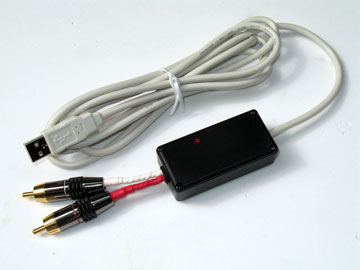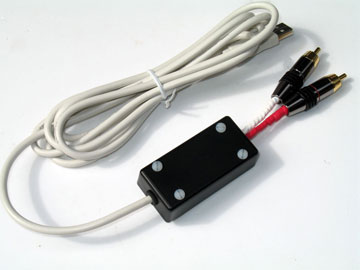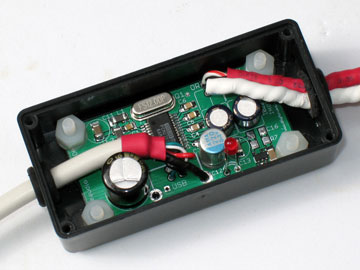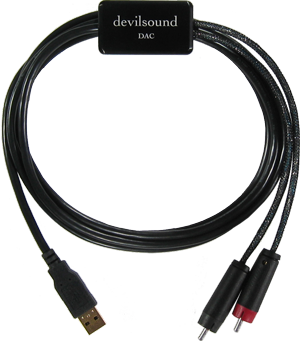Hi guys,
I ran into this post just recently (finally, I got in on a thread at the beginning!), and I thought I might be able offer some insight ...
This is the first I've seen the
Bantam DAC, and it looks quite nice. The PCM2702 which it uses is a premium USB receiver chip and D/A converter (I have an tube amp which uses the chip), and I imagine their circuit sounds excellent. For the price, and if you're into assembling yourself (or is there a pre-built version?), it would be quite hard to beat. Hats off to them for the circuit, and for publishing it as well.
Oh, and as for the pics displayed above of the compact enclosure, with the built in cables ... looks <cough> quite like something I've seen before. But hey, go for it! The all-in-one cable is a great form factor... do keep in mind, though, that the case on the devilsound DAC is a custom milled (CNC) aluminum enclosure, with no screws, and barely a visible seam (and laser engraved text). There’s quite a bit of engineering that went into it, I think it’s hard to appreciate until you see it in person.
As for the
Penguin amp mentioned, I'm actually quite befuddled on their choice of the PCM2704. The THD+N of this chip is fully three times higher (or possibly six times higher, depending on how they implemented the power supply) than that of its cousin, the PCM2702. For $4 more, they could have used a chip with a high-grade D/A converter (the PCM2702 checks in right at the theoretical limit for 16-bit sound). Not sure what to make of this ...
Anyway, let me mention a few things about the devilsound DAC. I've never been a huge fan of CDs, thinking that they sounded a bit harsh and, well, "digital." … until I discovered NOS and, to make a long story short, started to enjoy the sound of digital recordings for probably the first time. (I'm not alone in my opinion on NOS, either.) From there came devilsound labs, and at the time we started especially, there was absolutely nothing like it on the market. (I still don't think there is, to be honest.)
Unfortunately, NOS requires a bit more than a single chip (especially if you put effort into a clean power supply). I mean, a LOT more. Our board is double sided, four layer (ground and power planes in the middle), and regenerates multiple clean, independent power rails (including a negative voltage rail!) from the USB power. There’s even a chip on there running our own firmware to make everything work together.
In total, the devilsound DAC has 24 different component types, and 63 individual surface mount components. (No kidding. The board is mounted by its edges, so we can fit all the components on both sides without anything touching the case.)
... thus, the price of the devilsound DAC. It's actually not a huge markup from the manufacturing cost, especially considering what typical markups are for audio electronics. And, it's not like we get 10,000 made at a time in China. (The whole thing's designed and manufactured in the US.)
Surprisingly, the Eichmann’s + silver wire aren’t the chief cost, by far ... to put it in perspective they cost about as much as getting all the components mounted onto the board. They're really nice plugs - light, simple, easy to work with and, well, I would say, worth it.
Anyway, we've been getting a lot of positive feedback on the sound. (Here's a
post from one of our customers ), but not a lot of comments online yet …
I hope this helps. I’ll check back on the thread to see if there are other questions I can answer, or feel free to email me directly (contact info is on our website).
Jonathan
devilsound labs





